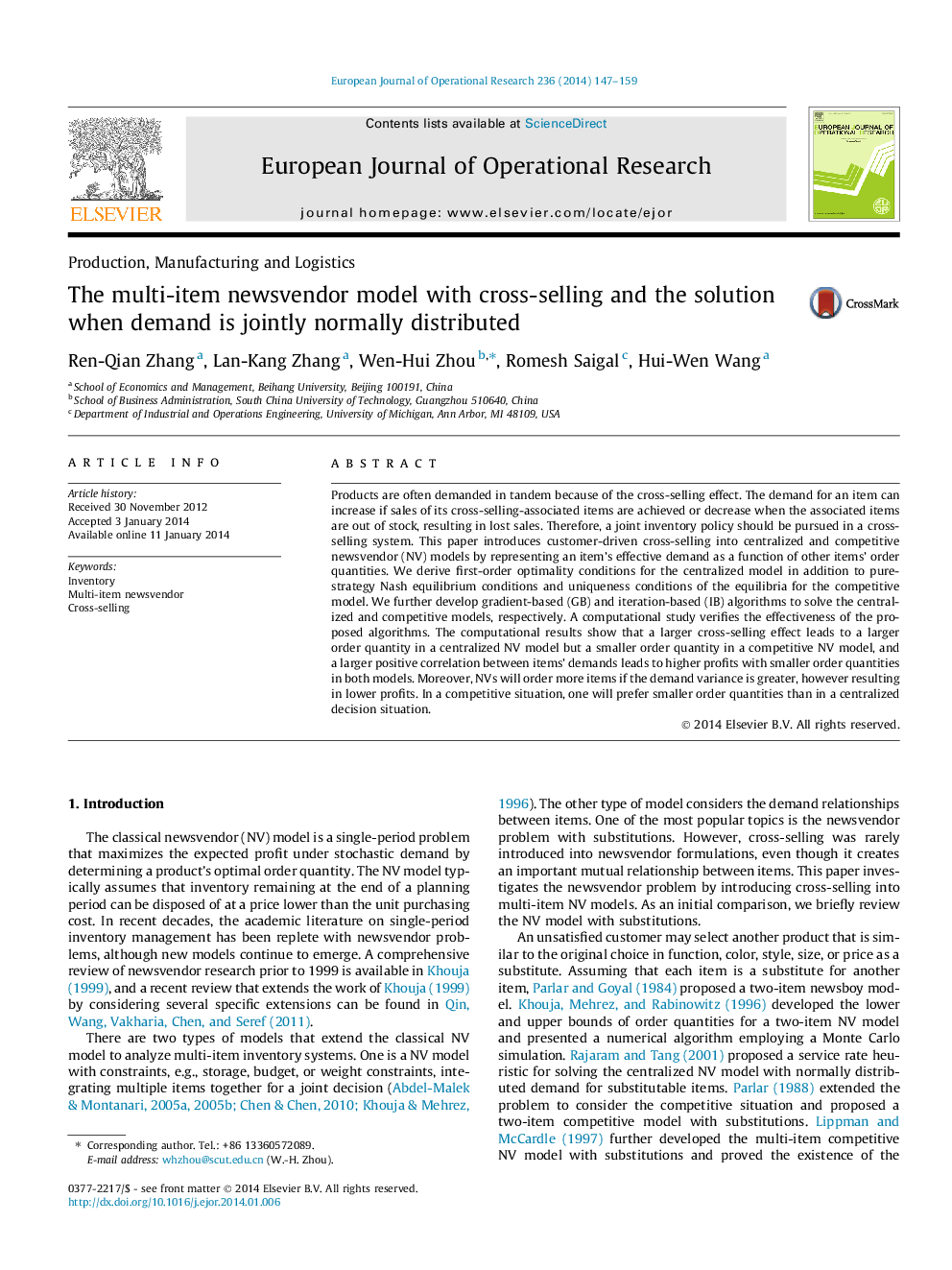| Article ID | Journal | Published Year | Pages | File Type |
|---|---|---|---|---|
| 6897501 | European Journal of Operational Research | 2014 | 13 Pages |
Abstract
Products are often demanded in tandem because of the cross-selling effect. The demand for an item can increase if sales of its cross-selling-associated items are achieved or decrease when the associated items are out of stock, resulting in lost sales. Therefore, a joint inventory policy should be pursued in a cross-selling system. This paper introduces customer-driven cross-selling into centralized and competitive newsvendor (NV) models by representing an item's effective demand as a function of other items' order quantities. We derive first-order optimality conditions for the centralized model in addition to pure-strategy Nash equilibrium conditions and uniqueness conditions of the equilibria for the competitive model. We further develop gradient-based (GB) and iteration-based (IB) algorithms to solve the centralized and competitive models, respectively. A computational study verifies the effectiveness of the proposed algorithms. The computational results show that a larger cross-selling effect leads to a larger order quantity in a centralized NV model but a smaller order quantity in a competitive NV model, and a larger positive correlation between items' demands leads to higher profits with smaller order quantities in both models. Moreover, NVs will order more items if the demand variance is greater, however resulting in lower profits. In a competitive situation, one will prefer smaller order quantities than in a centralized decision situation.
Keywords
Related Topics
Physical Sciences and Engineering
Computer Science
Computer Science (General)
Authors
Ren-Qian Zhang, Lan-Kang Zhang, Wen-Hui Zhou, Romesh Saigal, Hui-Wen Wang,
